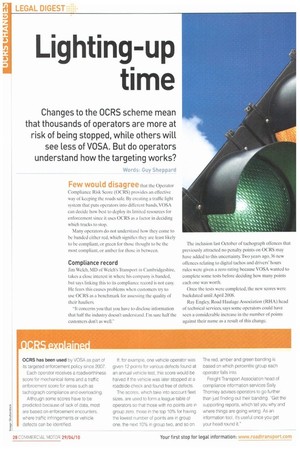p,!rgmgppmmwimwm
Page 28

If you've noticed an error in this article please click here to report it so we can fix it.
. • 1.
OCRS has been used by VOSA as part of its targeted enforcement policy since 2007.
Each operator receives a roadworthiness score for mechanical items and a traffic enforcement score for areas such as tachograph compliance and overloading.
Although some scores have to be predicted because of lack of data, most are based on enforcement encounters, where traffic infringements or vehicle defects can be identified. If, for example, one vehicle operator was given 12 points for various defects found at an annual vehicle test, this score would be halved if the vehicle was later stopped at a roadside check and found tree of defects.
The scores, which take into account fleet sizes, are used to form a league table of operators so that those with no points are in group zero, those in the top 10% for having the lowest number of points are in group one, the next 10% in group two, and so on.
The red, amber and green banding is based on which percentile group each operator falls into.
Freight Transport Association head of compliance information services Sally Thornley advises operators to go further than just finding out their banding. 'Get the supporting reports, which tell you why and where things are going wrong. As an information tool, its useful once you get your head round it."




























































































































